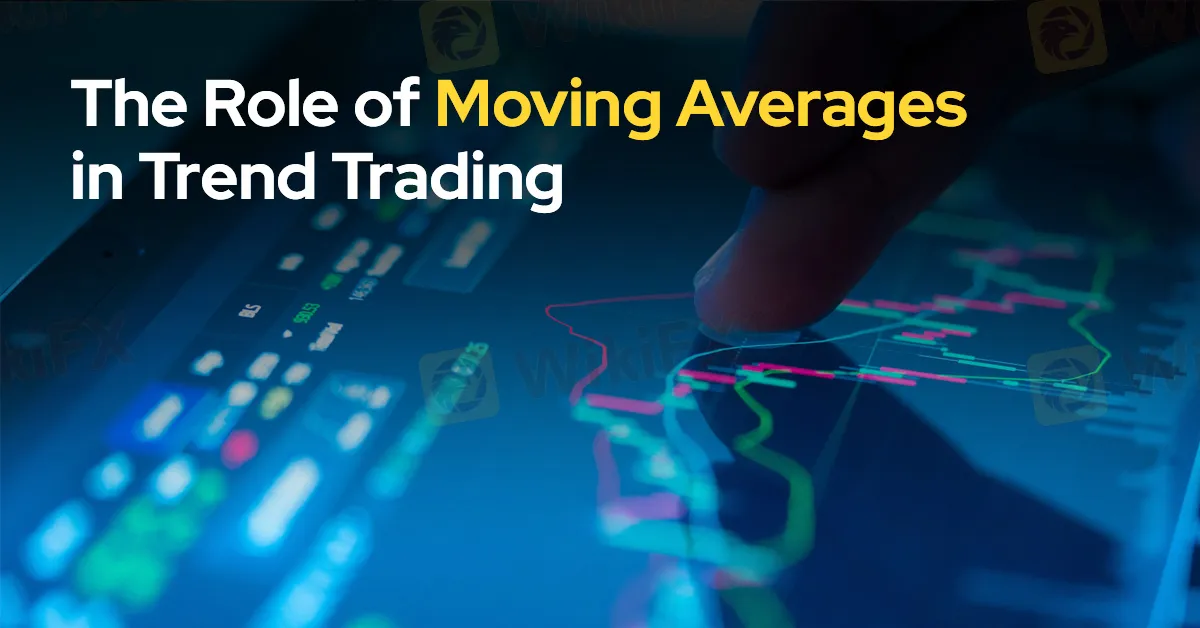The Role of Moving Averages in Trend Trading
Abstract:Moving averages are essential tools in technical analysis, widely used by traders to identify trends and make informed decisions. By smoothing out price data, moving averages help traders filter out noise and determine the overall direction of a market, making them invaluable in trend trading strategies.

Introduction
Moving averages are essential tools in technical analysis, widely used by traders to identify trends and make informed decisions. By smoothing out price data, moving averages help traders filter out noise and determine the overall direction of a market, making them invaluable in trend trading strategies.
What are Moving Averages?
A moving average (MA) is a statistical calculation that averages a set of data points over a specific period. In trading, the most common types are:
Simple Moving Average (SMA): This is calculated by summing the closing prices over a designated number of periods and dividing by that number. It provides a straightforward average but can lag behind current prices.
Exponential Moving Average (EMA): This gives more weight to recent prices, making it more responsive to new information. EMAs are favored by many traders for their sensitivity to price changes.
Identifying Trends with Moving Averages
Moving averages are primarily used to identify market trends. Heres how they can aid trend trading:
Trend Direction: When prices are above the moving average, it generally indicates an uptrend, while prices below suggest a downtrend. This visual representation helps traders align their positions with the prevailing trend.
Crossovers: One of the most popular strategies involves using two moving averages—a shorter period and a longer period. A bullish crossover occurs when the shorter MA crosses above the longer MA, signaling a potential buy opportunity. Conversely, a bearish crossover happens when the shorter MA crosses below the longer MA, indicating a potential sell signal.
Support and Resistance Levels: Moving averages can act as dynamic support and resistance levels. In an uptrend, the moving average may serve as support, while in a downtrend, it can act as resistance. Traders often look for price action around these averages to make decisions.
Combining Moving Averages with Other Indicators
While moving averages are powerful on their own, they are often more effective when combined with other technical indicators. For example:
Relative Strength Index (RSI): This momentum oscillator can help confirm trends identified by moving averages. A bullish signal is stronger when the RSI is above 50, while a bearish signal is confirmed when its below 50.
MACD (Moving Average Convergence Divergence): This indicator uses moving averages to identify momentum and trend changes. Traders can look for crossovers and divergence between MACD and price action for additional confirmation.
Limitations of Moving Averages
Despite their usefulness, moving averages have some limitations:
Lagging Indicator: Moving averages are lagging indicators, meaning they react to price changes rather than predict them. This delay can result in late entry or exit points.
Whipsaws in Sideways Markets: In choppy or sideways markets, moving averages can produce false signals, leading to potential losses.
Parameter Sensitivity: The effectiveness of moving averages depends on the chosen time period. Shorter periods can generate more signals but may also increase noise, while longer periods smooth out fluctuations but can delay signals.
Conclusion
Moving averages play a crucial role in trend trading, helping traders identify and capitalize on market trends. By providing insights into trend direction, potential entry and exit points, and acting as dynamic support and resistance, moving averages can enhance trading strategies. However, traders should be mindful of their limitations and consider combining them with other indicators to improve overall effectiveness. Understanding how to leverage moving averages can significantly enhance a trader's ability to navigate the ever-changing forex market.

Read more

AI Triples U.S. Treasury’s Fraud Recovery to $1B in 2024
The U.S. Treasury's use of AI for fraud detection leads to a significant increase in recovery, reaching $1 billion in fiscal 2024, thanks to machine learning.

FB Investment Scam Cost Malaysian Housewife RM80K
A 50-year-old Malaysian housewife recently lost RM82,175 to a fraudulent investment scheme promoted on Facebook in July. The victim, a former secretary in a private company, was initially attracted to the enticing investment opportunity and followed a link from the advertisement that directed her to WhatsApp to connect with the scheme's operator.

The Importance of Backtesting in Forex Trading
One of the most effective ways to validate trading strategies is through backtesting. This process involves testing a trading strategy using historical data to assess its effectiveness before applying it in live markets. Understanding the importance of backtesting can significantly enhance a trader's chances of success.

CySEC Suspends FXOpen Shareholder Voting Rights for Prudent Management
The Cyprus Securities and Exchange Commission (CySEC) has decided to suspend the voting rights of FXOpen EU Ltd’s sole indirect shareholder, Aliaksandr Klimenka, to ensure sound management.
WikiFX Broker
Latest News
XM - Featured Broker in WikiFX SkyLine Guide
BUX and PrimaryBid Partnership Opens IPO Access for EU Retail Investors
Plus500 Users Count Surges to 121K with Average Deposits Reaching $6,150
Coinbase Launches Tool to Simplify AI Agent Creation for Crypto Tasks
Illegal Bitcoin Mining Is Draining Millions from Malaysia’s National Company
Angel One is an Ideal choice for you ?
Canadian Watchdog Warns Against Capixtrade
StoneX Group Strengthens Indian Presence with Bullion Exchange Membership & New Offices
Indonesian Woman Lured into S$1.3 Million Forex Scam by Friend
6 Trading Platforms That May Put Your Money at Risk
Rate Calc
